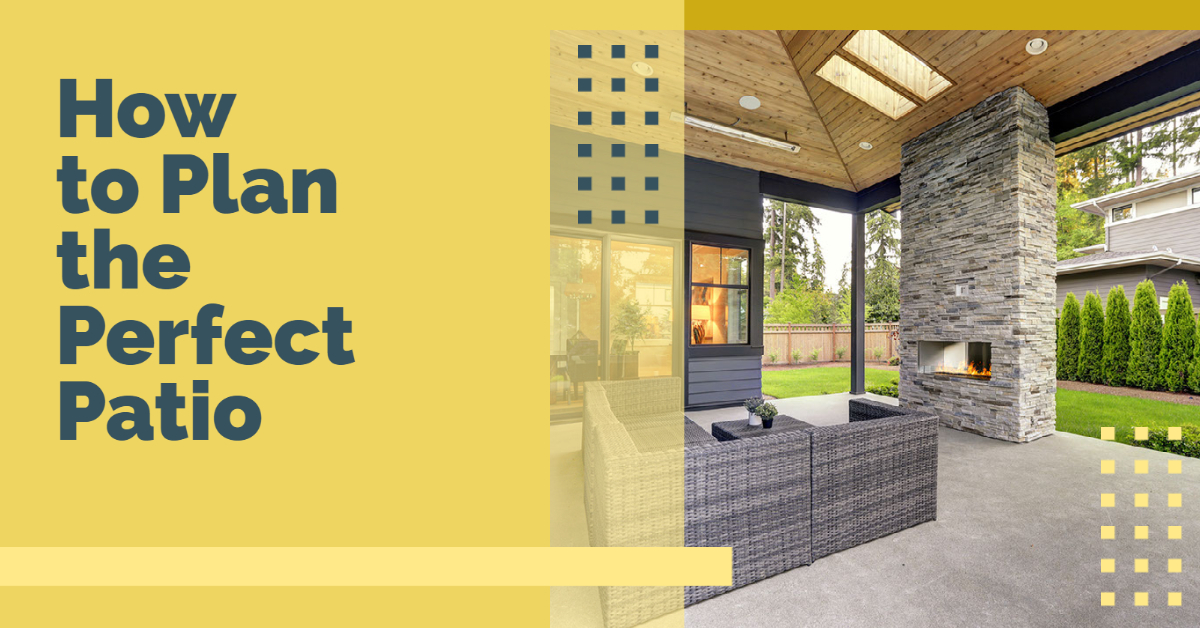For many homeowners, the patio borders on magical: a place to relax, entertain, cook out and take a break from the day-to-day. It’s surrounded by vibrant hues, and a meal prepared in an outdoor kitchen somehow tastes better than anything that comes from its indoor counterpart.
Creating that perfect outdoor space for you and your family all starts with the literal foundation of this alfresco living room: the patio materials. Your selection can have a huge effect on the appearance, durability and functionality of your favorite home addition.
Getting started
Before you commit to a type of patio, first envision the finished space. You probably have a good idea of the location and approximate size, so go grab a chair, take it outside, and position it in the intended spot. Then sit, and picture each material in your mind’s eye.
Your patio should not only complement your home and landscape, it should also enhance your lifestyle. If you have a large space to work with, consider incorporating a combination of paving materials; some of the best patio designs include two or more. Using multiple materials lets you integrate inlaid borders that can visually separate an area for lounging from the outdoor kitchen.
When you’ve dreamed up your ideal design, consider which materials would best bring it to life, in terms of both aesthetics and practical issues, such as maintenance requirements and cost.
Concrete
Poured concrete is the patio material of choice for many homeowners because it’s structurally sound, inexpensive, and can even be stamped or dyed to mimic higher-end paving materials. It’s best suited for moderate to warm climates where frost heave is not a concern.
Bricks
Available in a variety of colors, bricks create a warm and attractive patio. This classic patio style typically costs more than one constructed from concrete, not just for the materials themselves, but also for labor — a significant consideration when every brick must be set by hand, leveled and grouted.
Should you decide to invest, you can design the space with any number of patterns, from a traditional running bond to something with added textural appeal like a boxed basket-weave or herringbone.
Pavers
Often manufactured from cement, cinder or stone, pavers top the DIY patio wish list for their low price and super simple installation — they’ll have you out there grilling in record time.
If you’re planning to lay your own patio, you’ll need a suitable substrate consisting of at least three inches of sand, and a permanent border, such as a poured concrete curb, to keep the pavers from shifting.
Stone
The highly desirable look of stone comes with a steeper price tag — particularly if your pick isn’t locally sourced — but you can’t beat it for natural appeal. Flat, irregularly shaped stones offer a calm and meandering effect, while uniform-cut slabs of granite, travertine, slate, or bluestone can produce a formal patio that’s fitting for any backyard.
Planning tip: Natural stone is extremely durable for any patio, but if you happen to be planning one poolside, opt for a nonslip variety, such as coral stone.
Tile
Available in ceramic, glass, porcelain, terra cotta and natural stone, tile creates beautiful mosaic patio designs that are refreshingly cool underfoot in hot climates. Because tile is thin, it requires the installation of a concrete slab.
Crushed stone, pea gravel and sand
If you’re not a fan of rock-solid patios, crushed stone, pea gravel or sand could be more your style. Both crushed stone and gravel offer a variety of colors and textures at low prices, and even sandy Zen gardens can double as patio areas.
You will, however, need to install a solid perimeter to keep the loose material from spreading outside its intended border.
Source: Zillow


